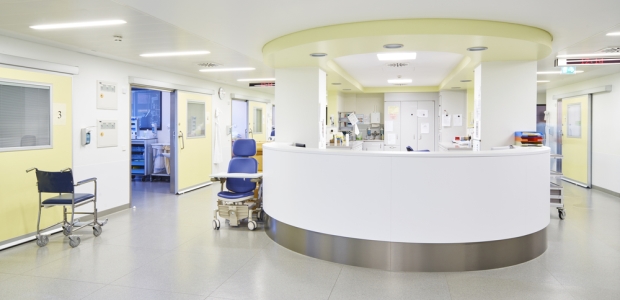
Dallas Event Focused on Preventing HAIs
"What is most frustrating about the enormous costs of HAIs is that the majority are preventable," said Linda Lybert, founder and president of the Healthcare Surfaces Summit. "We are focusing our prevention campaign on surfaces as a foundational issue because they are implicated in many HAIs and their complexity can stymie prevention efforts.
Healthcare Surfaces Summit 2017 is taking place this week in Dallas, bringing together a group of experts to discuss strategies and best practices for preventing health care-acquired infections (HAIs). Organizers say the event is the first-ever initiative to address the challenges presented by "superbug" HAIs by bringing together world-class experts to come up with holistic, system-wide prevention solutions. The Summit is now a non-profit organization advancing its programs year round, following a 2015 inaugural session, where participants created four Initiative Workgroups to address different aspect of the problem.
The workgroups will meet again in Dallas to review progress, collaborate with other groups, and identify their scope of work for the coming year.
HAI survivor, activist, and blogger Mary Millard will give a keynote address about her battle with a resistant infection acquired during treatment for a cardiovascular emergency.
"What is most frustrating about the enormous costs of HAIs is that the majority are preventable," said Linda Lybert, founder and president of the Healthcare Surfaces Summit. "We are focusing our prevention campaign on surfaces as a foundational issue because they are implicated in many HAIs and their complexity can stymie prevention efforts. More thorough cleaning and disinfecting of surfaces is not enough. Not all surfaces can be cleaned in the same way, and cleaning can actually cause damage, often unseen, that supports the proliferation of harmful microbes that are then transmitted throughout the hospital."
Hard surfaces, medical devices and instruments, and soft surfaces such as scrubs, bedding, mattresses, and other textiles have been identified as having an active role in the spread of HAIs and antibiotic-resistant superbugs, according to the organizers. CDC has reported that there has been significant progress made in preventing some infection types, yet much more work must be done because on a typical day, about one in 25 hospital patients has at least one health care-associated infection.
"Reducing the pathogens on health care surfaces is often viewed as a design and construction issue, when it is much more than that," Lybert said. "There is science behind the spread of infections via surfaces. It is not enough to understand the physical characteristics of specific surfaces and surface materials, nor to become expert in the latest disinfection agents and protocols. This information must be combined with an understanding of microbiology, the physical environment, and human behavioral factors. This is why a broad systems-based approach is essential and why we view our unique interdisciplinary collaboration that dissolves expert silos and promotes a holistic view as so valuable, with the potential to achieve real breakthroughs against HAIs."